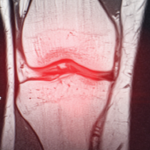
The AMP RA/Lupus Network focuses on human tissue and paired blood, and analyzes samples using single-cell and cell-subset approaches.
Dmytro Zinkevych / Shutterstock.com
CHICAGO—“Why do so many drugs fail in clinical trials?” asked Michael Brenner, MD, chief of rheumatology, immunology and allergy at Brigham and Women’s Hospital in Boston. This question, previously posed by Francis Collins, MD, PhD, director of the National Institutes of Health, prompted a discussion among scientists and stakeholders in the pharmaceutical industry. The conversation led to the foundation of the Accelerating Medicines Partnership (AMP) by the National Institutes of Health (NIH), pharmaceutical companies and nonprofit organizations.
The partners have designed a project plan to address relevant challenges for rheumatoid arthritis (RA) and systemic lupus erythematosus (SLE) through the AMP RA/SLE Program. The goal is to ascertain and define shared and disease-specific biological pathways in order to identify relevant drug targets for the treatment of autoimmune diseases.
In September 2014, the National Institute of Arthritis and Musculoskeletal and Skin Diseases (NIAMS) and the National Institute of Allergy and Infectious Diseases (NIAID), as participating members of the AMP RA/SLE Program, funded a collaborative AMP RA/Lupus Network.
Researchers from the AMP RA/Lupus Network came together in June at the annual Federation of Clinical Immunology Societies (FOCIS) meeting to share their progress as they perform a systematic molecular deconstruction of human diseases. The network includes both an RA disease group and an SLE disease group. Both groups share the same ultimate goal: to identify biomarkers and drug targets. As they work toward this goal, the network will generate publically accessible, disease-specific data.
The partnership began with the development of a project plan designed to address the relevant challenges of RA and lupus. After the plan has been implemented and data generated, the groups will use system-level bioinformatics to analyze gene expression and signaling in target tissues from affected end organs. The AMP RA/SLE Program has three research phases. “We just finished Phase I a couple of months ago. … We haven’t actually analyzed much of the data for biological insights,” explained Dr. Brenner.
Despite the relative lack of data, the accomplishments have been many, and he and his colleagues talked the audience through the process.
Project Overview
The Network focuses on human tissue and paired blood, and analyzes samples using single-cell and cell-subset approaches. The researchers then pair this analysis with histological, genetic and epigenetic approaches, as budget allows. Both the RA and the SLE groups have progressed similarly, and their efforts differ primarily in the target tissue (synovium vs. kidney). This story focuses on the RA disease group.
The AMP has provided the opportunity for rheumatologists to use advanced technologies on a large scale. “We’re not going to use something just because it is new. We are going to validate it,” explained Dr. Brenner, acknowledging that every technology has its strengths and weaknesses. For now, the RA group has chosen to use Cytometry by Time of Flight (CyTOF) to perform high-dimensional mass cytometry and pair those data with RNA sequencing (RNAseq).
Each patient provides a tissue sample that is used for histology and to prepare a single-cell suspension. The researchers use the single-cell suspension to perform three different analyses: CyTOF, RNAseq of cell subsets and RNAseq of single cells. One patient sample is first used as a source for CyTOF, and after the necessary cells have been allocated for mass spectrometry, 1,000 cells of each different cell subset (T cells, B cells, macrophages and fibroblasts) are collected for low-input RNAseq. Any cells remaining in the sample are then collected into flow cytometry buffer for single-cell RNAseq, with the intention of collecting up to 144 cells from each subset.
Research Phase 0
Phase 0 of the AMP RA/Lupus Network established a consortium infrastructure and standard operating procedure, which included barcoding, sample tracking, institutional review boards and clinical research facilities. This phase also included patient recruitment, biopsy, blood collection, preservation and shipping. All decisions pivoted on a key question: How do you analyze tissue samples across a network? The answer would be critical in determining “the quality of data that can come out of this pipeline,” explained Deepak Rao, MD, PhD, an instructor in medicine at Brigham and Women’s Hospital and Harvard Medical School, who described the standard operating procedures for RA target-tissue processing and analysis across the network.
The Network was concerned that multiple sites of biopsy would confound biological variation and create a batch effect. Thus, the investigators discussed three different approaches to sample analysis. One approach was to have each site process the tissue and run the analysis. Another option was to have each site process the tissue, freeze the cells and ship the samples to a central site where they would be analyzed. The final option, and the one chosen by the network, was to have each site freeze the tissue and send it to a central site for analysis. This approach was chosen in an effort “to streamline the pipeline by minimizing the upfront work at the collection site,” explained Dr. Rao. The group feared that if each site had to process its own samples, this would increase the opportunities for batch effects. Alternatively, a plan for centralized processing after tissue collection at multiple sites could, theoretically, minimize batch effects.
The Network next developed a consensus digestion protocol. The chosen methodology had to allow for the successful de-aggregation of synovium, release of fibroblast populations and preservation of cell surface markers for analysis. To achieve these goals, they paired mechanical and enzymatic digestion (Liberase TL).
The investigators put their standard operating procedure to the test as they sent synovial tissue acquired from biopsies performed at multiple sites across the U.S. to the Brigham and Women’s Hospital for centralized tissue processing. The digestion protocol resulted in single-cell suspensions of high-quality cells from cryopreserved tissue.
“We don’t see a substantial reduction in the number of cells collected after freezing the tissue,” explained Dr. Rao. “Overall, the samples have looked quite good.”
Dr. Brenner reflected on the data and sample flow in the RA pipeline and concluded, “That was a really huge undertaking.”
The good news was that no obvious batch effects were in the CyTOF and RNAseq results. “This is actually really amazing to have done this well,” exclaimed Dr. Brenner. Moreover, each donor was typically able to provide 300 cells for droplet-based, single-cell RNAseq (scRNAseq), which means that “you’re now looking at everything that’s there,” explained Dr. Brenner.
Results Begin to Come In
The CyTOF allows for the simultaneous examination of 40 dimensions. This process should make it possible for investigators to discover and track new cell populations, such as peripheral T helper cells. CyTOF should also be capable of tracking clusters of synovial cells as they change by disease activity and response to therapy. Further, the pairing of cell samples with tissue samples makes it possible to correlate flow cytometry and histology.
The Phase I results have not yet been fully analyzed, but “there are several populations of fibroblasts that are changing,” enthused Dr. Brenner. The team of researchers is analyzing data and preparing abstracts and papers that should soon be appearing in the scientific literature. Moreover, all data will be made public on Nov. 1.
Investigators are also now recruiting patients for Phase II. These patients will be stratified into four treatment groups: disease-modifying anti-rheumatic drug naive, active disease on methotrexate, active disease on anti-tumor necrosis factor and normal comparators. They will undergo ultrasound-guided research biopsies, and the samples will be sent in for analysis.
The excitement in the room was palpable. “I hope we’ve convinced you of the feasibility of doing this type of study on a large scale across many sites,” concluded Dr. Rao. “This [research] could serve as a model that could be applied to other autoimmune diseases in the future.”
Lara C. Pullen, PhD, is a medical writer based in the Chicago area.
